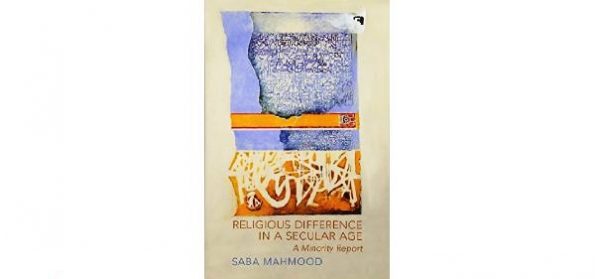
Kiran Klaus Patel
The New Deal: A Global History
(America in the World.) Princeton, N.J.: Princeton University Press, 2016. pp. xii, 435. $35.00.)
| Published in Journal of Global Analysis – Vol. 7 No. 2 | |
| Download the article in PDF format… |
According to Patel, historians such as Hofstadter, Burns and Schlesinger presented the New Deal as a national answer to the double crisis of capitalism and democracy and as the result of pressures from the Progressive movement in the United States. In contrast, Patel argues that the New Deal was a part of a broader movement worldwide and makes the case for a global history approach to illuminate the international origins of the New Deal. Global for Patel means to undertake an analysis at two levels: a comparison of developments in the United States with processes elsewhere, and to look at transnational connections, network and transfers (7). In his opinion, a global history approach to the New Deal allows us to see that the 1930s mark a defining moment in how the US saw itself in the world and how it mirrored key developments elsewhere (4) even though economic globalization itself was markedly reduced in the 1930s. One of the interesting insights from this book is in fact that policy discussions were still remarkably globalized despite the shrinking of the global economy visible in the ongoing League of Nations Conferences. Another example is Kagawa Toyohiko, a Japanese Christian missionary, who was the most important foreign advocate of cooperatives in the United States (233). In addition, Pan-Africanism created many alternative linkages between the US and abroad outside the mainstream (176).
In chapter one Patel begins by outlining how American practices were already travelling around the world in the 1920s. However, US policy itself was characterized by “insulationism” (Vandenberg, 4). The US had not participated in the League of Nations, the Immigration Act of 1924 reduced immigration dramatically, and racism was rampant (23). It was in this context that the stock markets crashed in 1929, triggering the greatest economic crisis since the onset of capitalism and leading to the near collapse of economic globalization and of economic liberalism. Chapter two shows that the Great Depression was also a crisis of political order. This led to the development of a Middle Way discourse, in between Fascism and Communism that brought Roosevelt and the New Deal coalition to power in 1932 (47). The New Deal program was less a fully developed policy than an ad-hoc approach to problems discussed in the chapter with regard to banking, agriculture, industry, workers’ rights, unemployment, and state intervention (or absence thereof, and the need to build up entirely new administrations such as the Tennessee Valley Authority, 97). The chapter shows that Roosevelt borrowed from all over the world for the New Deal. For example, the Civilian Conservation Corps was a labor service whose ideas originated in similar programs elsewhere (87). Chapter three discusses the failure of the United States to provide leadership in international economic cooperation (124). The chapter moves on to a general discussion of foreign policy whose relevance to the overall book is a bit unclear but it contains very interesting sections e.g. on Puerto Rico. Chapter four surprisingly goes back to the 1930s and introduces labor questions (Wagner Act 191), the Social Security Administration (193) and its international predecessors, housing policy in international context, electrification in international context (e.g. the Hydro-Electric Power Commission of Ontario and its program of public electrification, 219), consumer cooperatives, and the role of Sweden in the discussion on the role of state intervention in the United States (228). The chapter concludes by showing that Great Britain had its New Deal announcement in 1933, Canada in 1935, and other countries followed suit such as the Dominican Republic and Colombia (239). Unfortunately, as Patel points out several times and in different places, the New Deal in the US did not touch upon immigration policy, nor did it do anything about internal racism (258). Chapter five discusses how the New Deal created the basis for an American World order and how it cemented the role of the US in international economic policy.
The book contains an impressive amount of research but it makes for a rather difficult reading since no overarching story is told and it is more of a collection of “the alphabet soup” that is the New Deal with its many new administrative agencies. This story is coupled with a bewildering array of globalization examples. Patel assumes familiarity with the New Deal and its key components, so the book is not recommended to any beginner. For International Political Economy (IPE) and International Relations (IR) this book does not deliver much that is new since both disciplines already evaluate the New Deal in its global context. It is unfortunate that Patel does not build upon Polanyi’s work (The Great Transformation) as he could have presented his impressive list of country studies more systematically when discussing the different responses to the depression. Interestingly, Patel spends more time discussing the 1943 Atlantic Charter than the Bretton Woods Conference that for IPE epitomizes the partial internationalization of the New Deal via US hegemony even though he bemoans the lack of hegemonic leadership in chapter three. Patel also overlooks that the 2008 crisis is practically a re-run of the Great Depression; instead, he seems to assume that the New Deal still lives on, overlooking the turn towards neoliberalism since the 1970s that overturned key components of the New Deal (see Invisible Hands by Phillips-Fein). For the IPE specialist, the book may serve as a useful starting point for specific questions regarding the many agencies created during that period in the US. Historians of Puerto Rico, Brazil or Ghana (to name just a few) may also find the book to be a useful source for their own national histories in a global context. One wished that the author had included a methodological discussion of global history given that the field has seen a tremendous upsurge with the creation of the Journal of World History in 1990 and to distinguish his study more from the IR transnational relations approach that he seems to follow. All in all, for any historian or political scientist still convinced of the state as the key unit of analysis, the book convincingly shows that even a national policy such as the New Deal was developed by borrowing from abroad.
Dr. Sabine Dreher
Department of International Studies
Glendon College/York University
2275 Bayview Avenue;
Toronto, ON, Canada, M4N3M6
[email protected]



